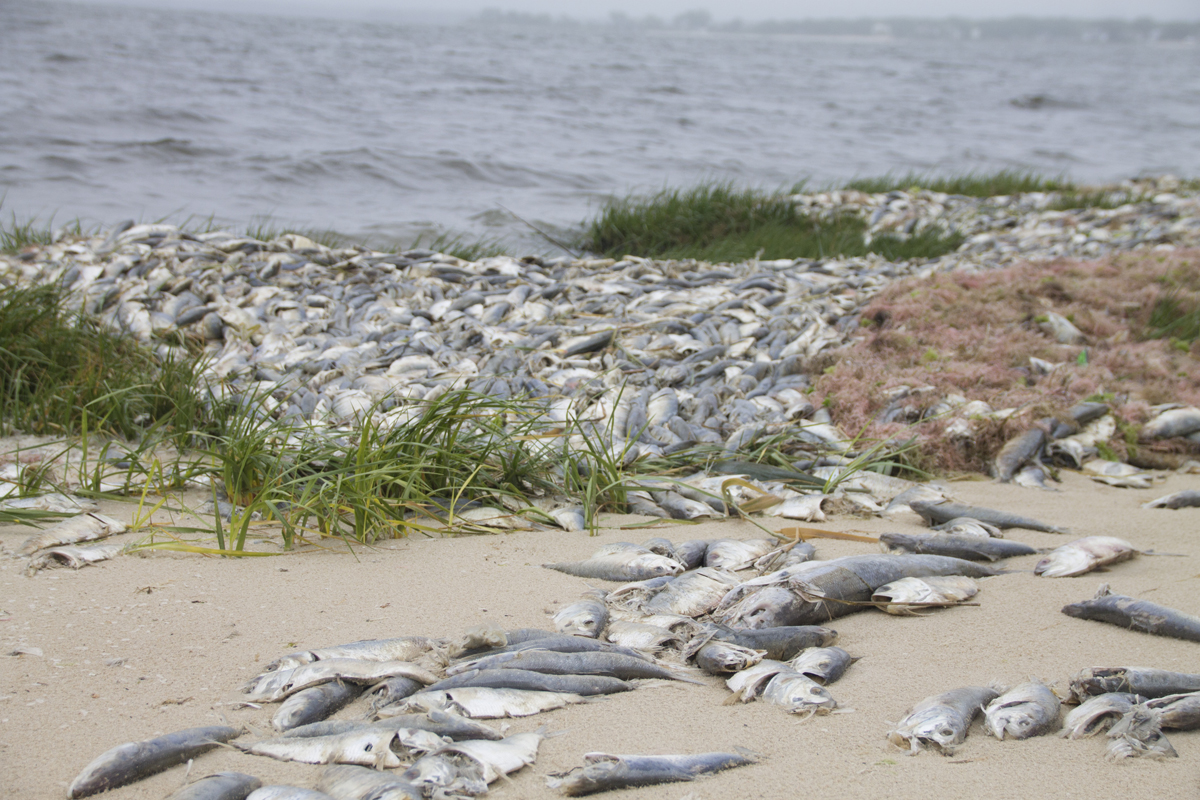Riverhead hopes high tide can help with dead fish cleanup

With thousands of dead bunker decaying on Riverhead’s shores after a massive fish kill last week, authorities are hoping Mother Nature can lend a hand with the cleanup.
Riverhead Supervisor Sean Walter said the town is in a “holding pattern,” as high tides make it difficult to clean up most of the fish. But with a full moon high tide coming Wednesday afternoon, Mr. Walter said fish could naturally be washed back out into local waters.
“Hopefully they rot and sink in the bay with the high tide,” Mr. Walter said.
Experts have linked the fish kill to nearby algal blooms called “mahogany tide.” The algae and other bacteria removed much of the oxygen from the water, creating so-called dead zones that the bait fish swam into, researchers have said.
Since the die-off Thursday night, fish have been washing up on the beaches around the bay, from Flanders to South Jamesport and as far east as Nassau Point in Cutchogue as of around noon Sunday.
Before Wednesday’s high tide, Riverhead Town will hold off on cleaning public beaches. Residents whose private beaches have been clogged with dead fish will have to bag the carcasses themselves, Mr. Walter said.
The town would then either pick up the bagged fish or make arrangements for the dead fish to be removed, he added.
“If they clean it up we will take care of removal, but there’s probably not enough people out there that can clean up all these fish,” Mr. Walter said.
But Kevin McAllister, the former Peconic Baykeeper who now runs the nonprofit Defend H20 devoted to water quality improvement, said the plan to let the fish rot on the bay bottom may not be the best idea.
“The practicality of cleaning up all the fish on the shoreline is a difficult task, but don’t dismiss this many fish on the bottom,” Mr. McAllister warned. “These are very sensitive waters.”
Mr. McAllister said the bodies of the fish will be decomposed by bacteria that will further lower oxygen levels, especially in the creeks and tributaries of the Peconic Estuary.
“Having the bottom buried in rotting fish can’t be a good thing for the survival of other marine life,” he said. “Things are going to be stressed from this … You’re talking an enormous amount of biomass just rotting on the bottom of the bays or the creeks.”
Mr. McAllister said the die-off was not a natural occurance, and blamed increased nitrogen in the waters for the growth of the algae.
“Things are not right,” he said. “By allowing that narrative to carry on, it just perpetuates complacency.”





